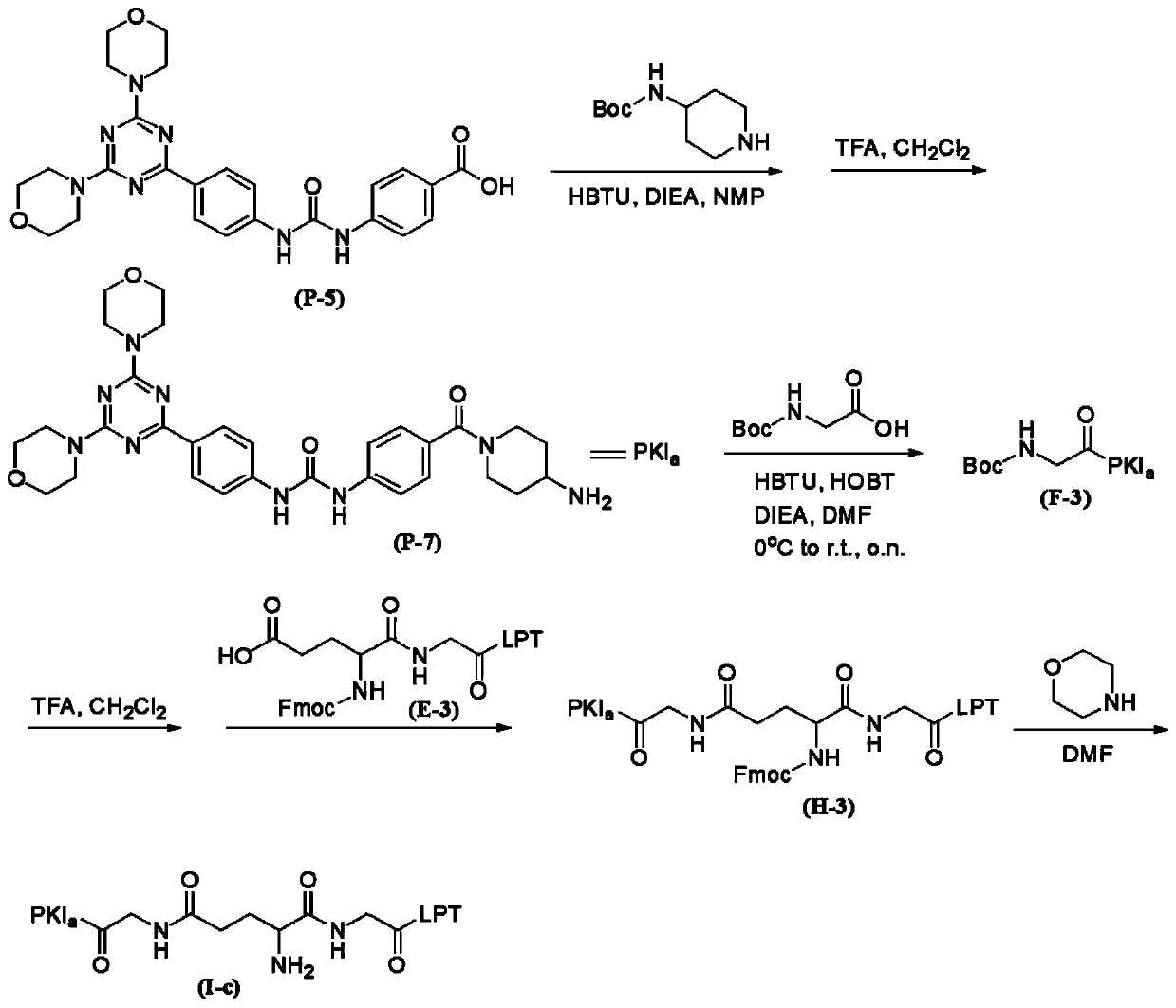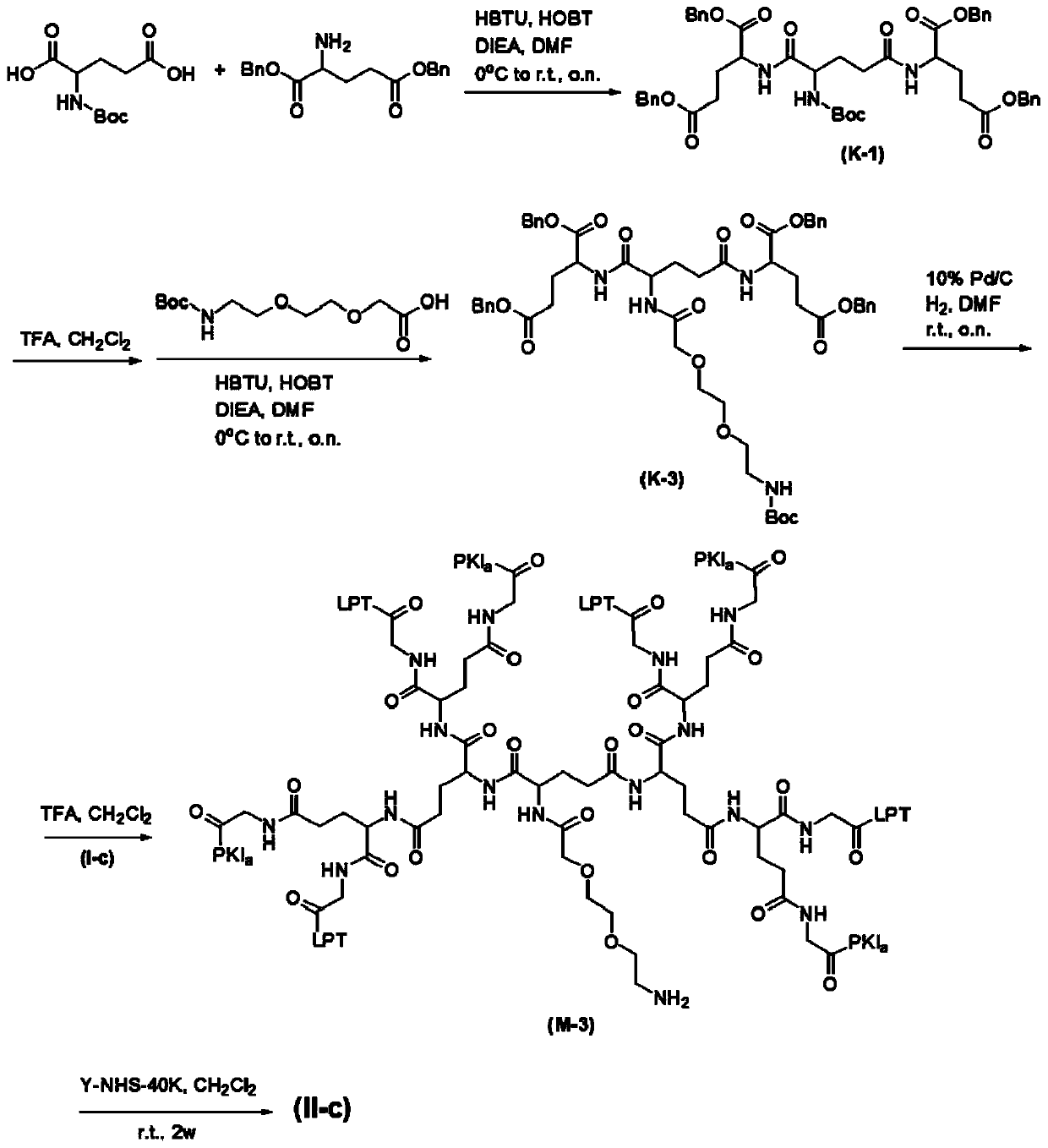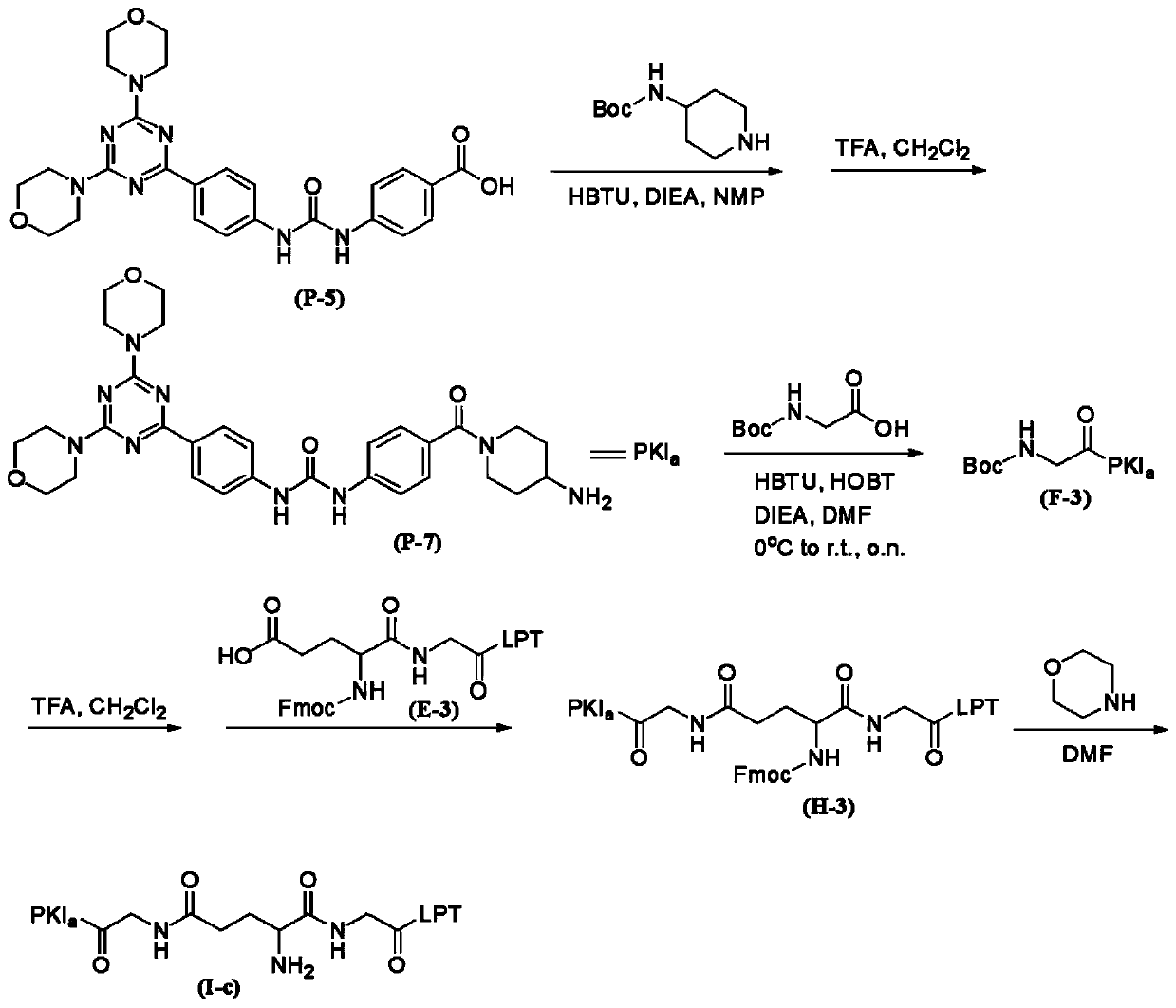PKI-587-based anticancer intermediate and polyethylene glycol-coupled anticancer drug, preparation method and application thereof
A technology of PKI-587 and polyethylene glycol, which is applied in the field of cancer treatment, can solve the problems of limited clinical curative effect, achieve significant clinical value, broad market prospects, and reduce toxicity
- Summary
- Abstract
- Description
- Claims
- Application Information
AI Technical Summary
Problems solved by technology
Method used
Image
Examples
preparation example Construction
[0081] The above-mentioned preparation method of the anticancer intermediate shown in formula I, it comprises:
[0082] Step S1: Amidation reaction of PKI-587 with amino acid or peptide and its derivatives to obtain the first intermediate having the N-AC structural unit in the formula I; At least one of the anticancer drugs undergoes an amidation reaction with amino acids or peptides and derivatives thereof to obtain another first intermediate having the N-AC structural unit in the formula I.
[0083] Preferably, the synthesis method of the first intermediate comprises: after amidation linking the amino acid or polypeptide with an amino protecting group and its derivatives with an anticancer drug in the presence of a polypeptide condensation reagent, deprotecting the amino group .
[0084] Wherein, the polypeptide condensation reagent includes HBTU, HOBT, HBTU. The alkaloid DIEA (N,N-diisopropylethylamine) is also added in the reaction, and the reaction temperature is -10-10...
Embodiment 1-1
[0121] preparation:
[0122] Glycine (11.1194g, 148.12mmol) was added to a 1L round bottom flask, 1,4-dioxane (150ml) was added to dissolve it, magnetons were added, 2N NaOH (88.88ml, 177.78mmol) was added, and Boc Anhydride (48.5 g, 222.22 mmol). After the reaction was completed, the reaction liquid was transferred to a rotary evaporator for concentration, and the concentrated liquid was transferred to a 1L separatory funnel, and 100 ml of diethyl ether was added for washing, and the reaction was repeated twice. Separate the aqueous phase and the organic phase, and add 1 mol / L hydrochloric acid to the aqueous phase to adjust the pH to pH=4. Extract the aqueous phase (150ml×5) with ethyl acetate, combine the organic phases, add anhydrous sodium sulfate to the organic phases to dry, filter with suction, remove water with toluene, and evaporate to dryness to obtain Compound A with a yield of 100%.
PUM
 Login to View More
Login to View More Abstract
Description
Claims
Application Information
 Login to View More
Login to View More - R&D
- Intellectual Property
- Life Sciences
- Materials
- Tech Scout
- Unparalleled Data Quality
- Higher Quality Content
- 60% Fewer Hallucinations
Browse by: Latest US Patents, China's latest patents, Technical Efficacy Thesaurus, Application Domain, Technology Topic, Popular Technical Reports.
© 2025 PatSnap. All rights reserved.Legal|Privacy policy|Modern Slavery Act Transparency Statement|Sitemap|About US| Contact US: help@patsnap.com



